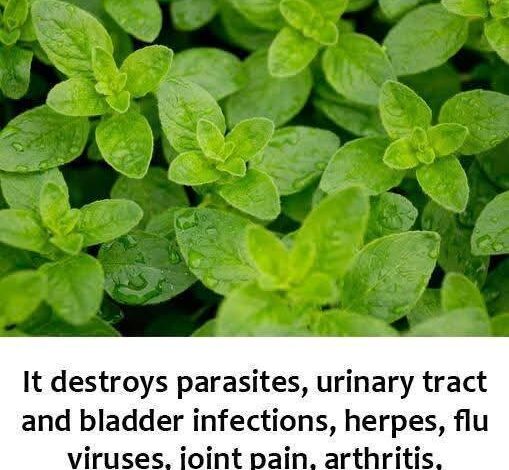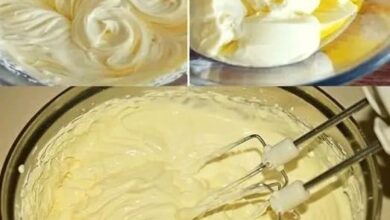How Much to Use, Which Parts

Here’s a structured, evocative, and informative “full article” styled post around the idea of “one of the most powerful plants in the world.” Because you didn’t name a specific plant, I’ll frame it generally — you can replace with e.g. Moringa, Turmeric, Ginseng, Ashwagandha, or the plant of your choice — and I’ll hint with a few examples. If you tell me the plant, I can make it specific.
—
🌱 Introduction
There are some plants so potent, so brimming with healing compounds, that cultures have revered them as gifts from nature. This is one of those. Imagine a plant that supports immunity, fights inflammation, nourishes cells, and connects you to centuries of tradition. That’s what we’re talking about. Let me take you through the story, the science, and how you can use it — safely, respectfully, and powerfully.
—
🌍 Origin and Cultural Significance
Many powerful medicinal plants originated in tropical, subtropical, or mountainous regions — places where biodiversity thrives.
Over centuries, indigenous and traditional societies (Ayurveda, Traditional Chinese Medicine, African herbal traditions, Amazonian healers, etc.) have used these plants as tonics, adaptogens, remedies, and spiritual allies.
The plant’s importance often goes beyond medicine. In some cultures, it is used in rituals, offerings, ceremonies, or considered sacred.
As botanical trade grew, the plant traveled, integrating into folk medicine systems around the world.
For example, moringa is often called the “miracle tree” because nearly every part — leaf, seed, pod — has uses. Modern articles cite how moringa leaves may help with blood sugar regulation and antioxidant support.
Similarly, turmeric is deeply embedded in Indian culture, cuisine, and Ayurvedic medicine for its anti-inflammatory benefits.
—
🧪 “Ingredients” & Quantity (How Much to Use, Which Parts)
Because these are plants, “ingredients” means which parts, how much, how prepared. Always start conservatively.
Part of Plant Typical Use Suggested Quantity / Dose*
Leaves (fresh or dried) teas, powders, capsules 1–3 g dried / 5–10 g fresh, or as herbal tea (1–2 tsp)
Root / Rhizome decoctions, extracts 0.5–2 g (depending on plant)
Bark / Stem / Seeds extract, tincture often 10–30% extract strength
Oil / Tincture topical or ingestible forms follow product guidelines
*These are approximate, generic ranges. Always follow research or product instructions for the specific plant.
If your plant is moringa, for example, one common dose is ~2 teaspoons of moringa leaf powder per day.
—
➕ Optional Additions / Synergistic Partners
To boost efficacy or flavor, you can combine with:
Black pepper / piperine — to enhance absorption (e.g. with curcumin in turmeric)
Ginger / cinnamon / citrus zest — to complement and support digestion
Adaptogenic herbs — ashwagandha, holy basil, ginseng — depending on purpose
Carrier oils / fats — many plant compounds are fat soluble, so mixing into food or oils helps bioavailability
Honey, lemon, mild herbs — to make teas or tonics more palatable
—
✅ Tips for Success
1. Quality matters — use reputable sources, organic where possible, test purity.
2. Start low, go slow — introduce small amounts to test tolerance.
3. Consistency over quantity — daily smaller doses often outperform sporadic mega-doses.
4. Proper preparation matters — e.g. decocting roots versus steeping leaves differently.
5. Mind interactions — powerful herbs can interact with medications (blood thinners, diabetes meds, etc.), so consult a health professional.
6. Store properly — light, heat, moisture degrade potent compounds.
—
🧾 Instructions (How to Use)
Here’s a sample method (adapt as needed for your plant):
1. Harvest / Source the plant part you are using (e.g. leaves, roots).
2. Dry / process if necessary (shade-dry, low heat).
3. Measure your dose (e.g. 1 tsp dried leaf).
4. Prepare:
Tea / infusion: steep for 10–15 minutes in hot (not boiling) water
Decoction (roots/bark): simmer gently 10–20 minutes
Powder form: mix into smoothies, yogurt, or water
Capsules / extracts: follow product instructions
5. Take at a consistent time daily (morning or midday) to track effects.
6. Adjust based on how your body responds (start low, then increase gradually).
—
📖 Description
This plant reveals itself in layers:
Flavor / Aroma: earthy, sometimes bitter, often green, or spicy, depending on the species.
Texture: dried leaves become powdery; roots or barks become fibrous and require simmering.
Effects: tends to uplift, calm, or balance depending on its adaptogenic or bioactive properties.
When used over time, many people report improved energy, enhanced resilience, better digestion, or clearer cognition — though effects depend heavily on dose, quality, and individual response.
—
🧮 Nutritional / Phytochemical Profile
Powerful plants tend to be rich in:
Antioxidants (polyphenols, flavonoids, phenolic acids)
Vitamins & minerals (vitamin C, B‑complex, magnesium, iron, potassium)
Alkaloids, glycosides, terpenes, saponins — bioactive compounds
Fiber / plant polysaccharides
For example, moringa leaves have more vitamin C than oranges, more calcium than milk, and more iron than spinach in some analyses.
Turmeric’s star compound curcumin is known for its anti-inflammatory and antioxidant activity.
Because these are not conventional “foods” always, nutritional labeling is rarely standardized — think of more of a phytochemical profile than macros.
—
🧾 Conclusion
Powerful plants carry ancient wisdom and modern promise. Their compounds can support vitality, resilience, and balance — when respected, used wisely, and sourced carefully. But remember: they are potent, not magical. They complement a healthy lifestyle, not replace it.
—
⭐ Recommendation
Choose one plant and learn it deeply — its dosing, preparation, timing, and your response.
Use fresh, quality, ethical sources.
Pair with good diet, sleep, movement, and stress management — herbs amplify habits, they don’t substitute them.
Keep a journal tracking effects, dosages, timing.
When in doubt, seek professional guidance, especially if on medications or pregnant/nursing.
—
💚 Embracing Healthful Indulgence
Using a “powerful plant” is in itself a form of indulgence — not indulgence in excess, but in intentional wellness. It’s an act of self-kindness, recognizing that nature offers us allies in health.
Let the ritual of preparing it — drying leaves, steeping a tea, mixing powder — be a moment to slow down, to connect with nature, and to taste the balance between healing and delight.
Because real indulgence isn’t about excess. It’s about honoring your body, your ancestors, and the planet, one mindful sip at a time.
—
If you tell me exactly which plant you’re referring to (moringa? turmeric? ashwagandha?), I’d be glad to tailor this precisely with up‑to‑date dosage, scientific references, and usage tips. Do you want me to make it specific?



